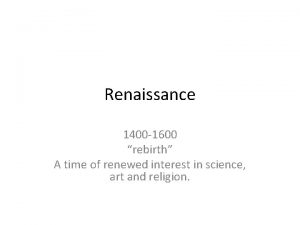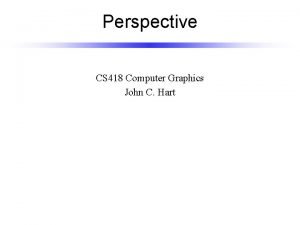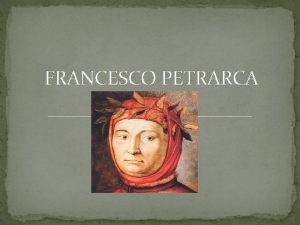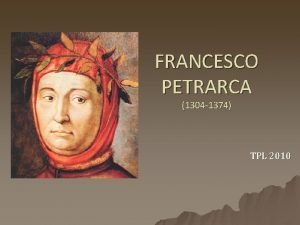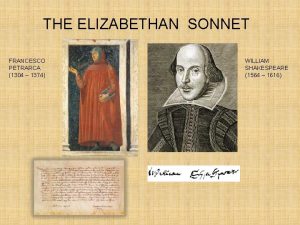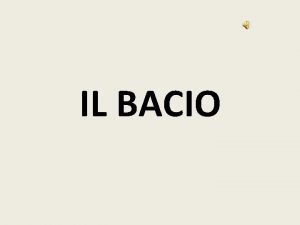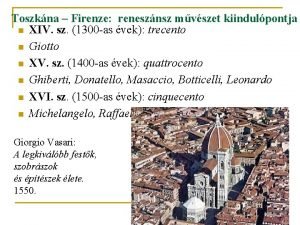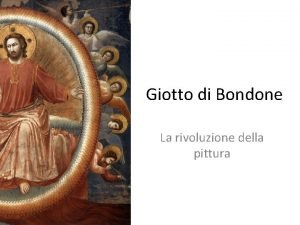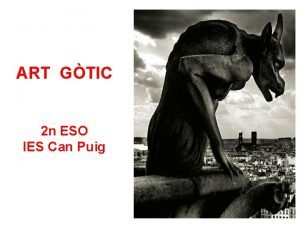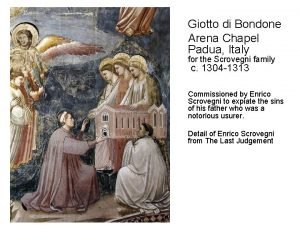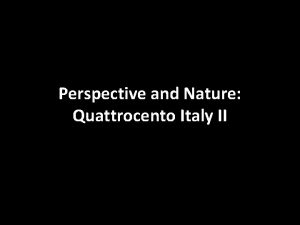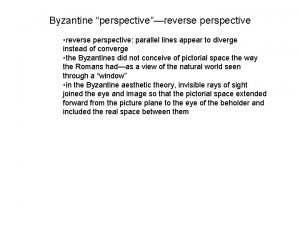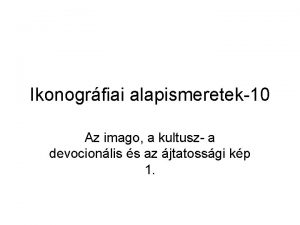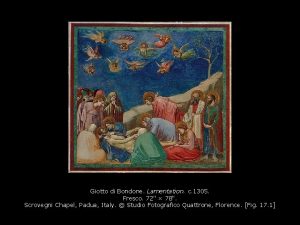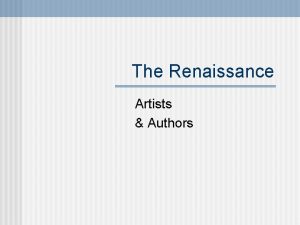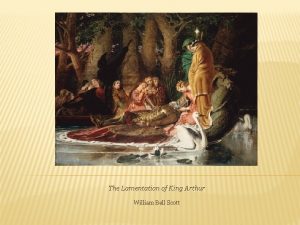Giotto The Lamentation The Mourning of Christ 1304















- Slides: 15

Giotto The Lamentation (The Mourning of Christ), 1304 A. D.


Giotto The Lamentation n n Introduction: Giotto di Bondone (1266 – 1336) was the first artist inspired by his spirit to break away from the traditional Byzantine art, and to display a changed attitude towards painting.

Giotto The Lamentation Giotto was a pupil of Cimabue (C. 1240 – 1302) another Florentine, who also showed a new spirit in his work, but Giotto’s naturalism probably came to him more from the realism displayed in the Roman mosaics of Cavallini, than from his master.

Giotto The Lamentation Giotto attempted to depict convincingly human figures and action, which were not only visually but also psychologically true to life; and he wished to represent form and space in three – dimensions on the flat canvas or wall.

Giotto The Lamentation Naturally, he failed to solve these problems completely; but his achievements were striking considering the enormous step forward he had to take from the stylized and artificial and Byzantine art.

Giotto The Lamentation What Massaccio was able to achieve a century later was largely due to the beginnings made by Giotto, who had managed to give at least an impression of actuality, based upon what he himself saw, in direct contrast to the formal abstractions of the art of his own age.

Giotto The Lamentation n When Giotto painted the fresco the ‘Lamentation’ in 1304, painters were still simple crafts people. They did not have the notion of the “artist” that we have today. Their most distinguished tasks include painting church murals, which showed Bible stories to the generally illiterate population, or the painting of alters.

Giotto The Lamentation n n Occasionally, secular rulers or respected citizens commissioned private devotional pictures. During those days, there was a fixed canon of rules, laying down which characters from the Old and New Testaments were to be included, and how they were to be recognized.

Giotto The Lamentation n n The structure of the painting followed the “perspective of meaning”, in which important things are shown large and more peripheral things smaller. A naturalistic representation corresponding to visual impression was not usual. The divine world – the predominant theme in painting was seen as a transcendental sphere, whose magnificence and sublimity were generally symbolized by a glowing gold ground.

Giotto The Lamentation n n To the contemporary viewer, Giotto’s pictures seemed very true to life. The artist arranged his figures resting on the ground and replaced the traditional background with a landscape.

Giotto The Lamentation n The deeply felt grief in the Lamentation (The Mourning of Christ) is obvious: St. John extends his arms in a dramatic gesture of despire, while Mary embraces her dead son for the last time.

Giotto The Lamentation n n The two women whose faces are covered can also be identified as mourners merely by their posters. Even the angels, derived from medieval iconography, have been “humanized”, and exhibits human emotions; wringing their hands, crying, and fluttering wildly, they fill the sky with their lament.

Giotto The Lamentation Giotto introduced a completely new style of artistic representations with his painting: he overcame the medieval tradition of a flat pictorial organization, which employed perspective according to importance and meaning.

Giotto The Lamentation His works, which shows the beginnings of spatial perspective, the physically of his figures and their individuality, provided the foundations on which Renaissance painting was to flourish.
 Andrea mantegna lamentation over the dead christ
Andrea mantegna lamentation over the dead christ Yyzzx
Yyzzx De arezzo italia
De arezzo italia Uuulaura
Uuulaura Sonnet petrarca
Sonnet petrarca Bacio munch
Bacio munch Liceo giotto ulivi
Liceo giotto ulivi Giotto krisztus siratása
Giotto krisztus siratása Prospettiva a lisca di pesce
Prospettiva a lisca di pesce Ies can puig
Ies can puig Giotto di bondone arena chapel
Giotto di bondone arena chapel Giotto jugement dernier
Giotto jugement dernier Giotto quattrocento
Giotto quattrocento Reverse perspective byzantine art
Reverse perspective byzantine art Giotto maria konopnicka
Giotto maria konopnicka Croce dipinta
Croce dipinta
